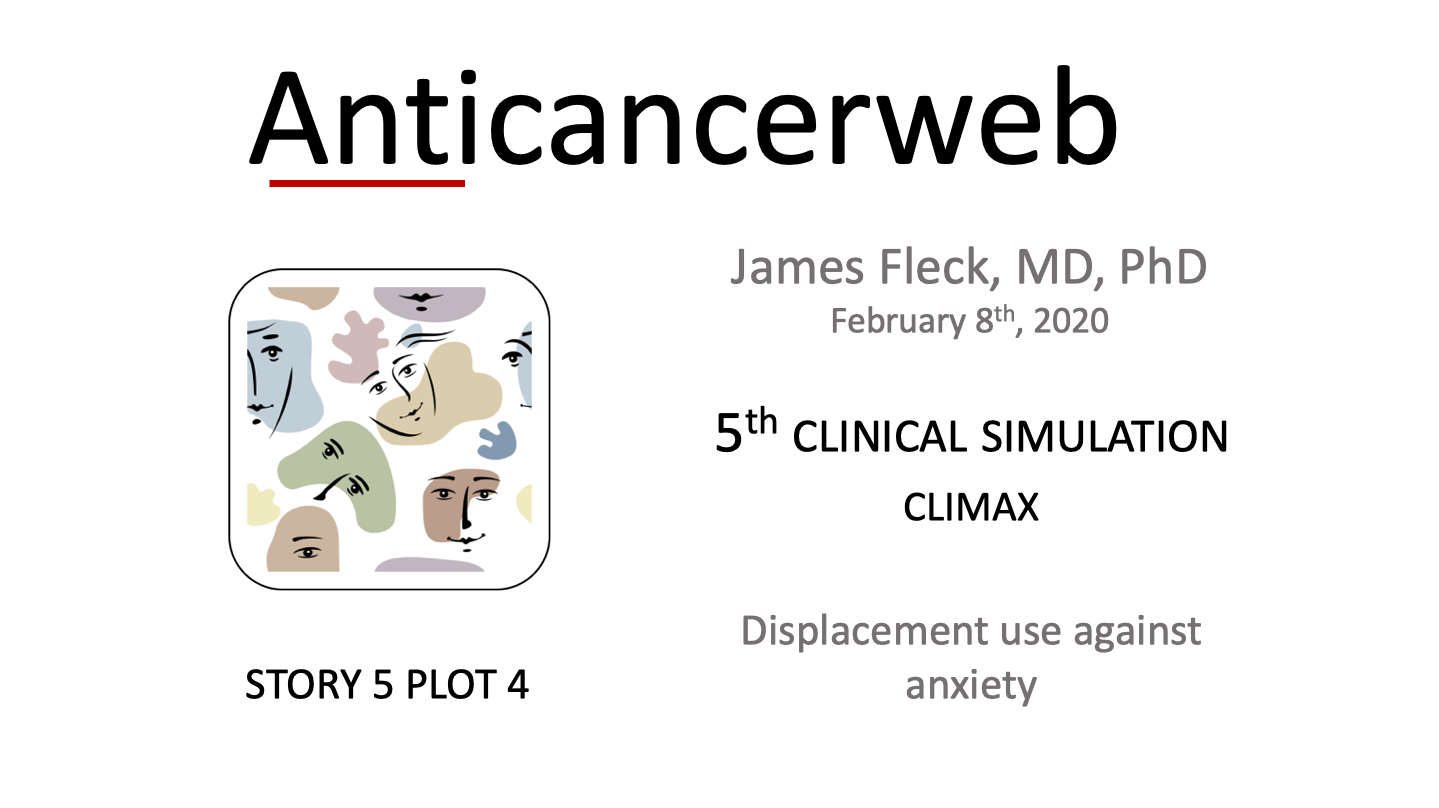
Working in the Cloud | Climax
How to use displacement and patient's creativity in cancer care
(Fictional narrative by the doctor)
James Fleck, MD, PhD: Anticancerweb 08 (02), 2020
Cloud computing is not about the sky. It is a metaphor used to define new Internet-based technologies that allow the data center to be operated over the Internet. The data can be accessed and shared as a virtual resource in a very secure environment.
Working in the cloud, Milton developed the Global e-PHR concept and I understood that it was a displacement used to ease his anxiety.
Exerting his natural creativity, he would better face an annoying treatment.
PHR means Personal Health Record and is preceded by the letter e because it is in an electronic (digital) file, specially designed to facilitate the upload of all the medical data. The system is centered on patients’ needs and rights. The record belongs to the patient, like an identity document (ID). Patient is required to fulfill the register. Everything else will be provided by attending physicians, who are responsible for the quality of data. Physicians are oriented to create a problem list, according the worldwide known problem-oriented medical record described by Lawrence Weed. Patients are stimulated to actively interact with their physicians to better qualify the problem list. A data base composed by clinical history, physical exam and some preliminary laboratory data would support each listed problem. Based on each numbered problem, physicians will define their intervention planning, which should be kept under surveillance until it is resolved. Additionally, reports, images and videos of each diagnostic exam should be uploaded by attending physicians into the designed icon. The e-PHR also provide to the users an automatic generated timeline of events and a summary including all uploaded information. Access to the e-PHR is based on the user's exclusive UN (username) and PW (password). Only the patient has the right to share information. At the patient's discretion, e-PHR data sharing should be restricted to professionals or institutions directly involved in his health care. Using clouding computing would make e-PHR a global resource.
Milton also designed an iconic e-PHR prototype, turning it available into a website for critical comments and suggestions (www.ephr.org). Since electronic patient record involves multiple stakeholders, it has been historically difficult its implementation in the real world. Trying to overcome major limitation, Milton created a big data, further using the platform as an ill-structured problem-solving new methodology.
After discussing with me some steps of medical rationale, Milton came out with the electronic file shown below and we start to describe what would be included under each icon.
http://www.ephr.org
Global e-PHR was designed to meet the expectations of all stakeholders and we submitted the project to their critical comments, whose suggestions would be generating collective intelligence. We identified five stakeholders (patient, physician, information technology, healthcare manager and health insurance company) and asked them to categorize their comments. We linked the comments to the colors and shades of Leonardo da Vince’s master piece, the Mona Lisa. Each comment will be associated with six pixels. The pixel combination would repaint Mona Lisa with increasing resolution. This abductive reasoning methodology shown in colors and shades would create a large volume of data (big data), supporting the generation of collective intelligence and further assisting in ill-structured problem solving.
To be continued in PLOT 5 (falling action) …
* Attention: The story 5 will be published sequentially from PLOT 1 to PLOT 6 and you will always see the most recent posting. To read Story 5 from the beginning, just click in the numbered links located at the bottom of the homepage.
© Copyright Anticancerweb 2020
James Fleck, MD, PhD: Full Professor of Clinical Oncology at the Federal University of Rio Grande do Sul, RS, Brazil 2020

Please login to write your comment.
If you do not have an account at Anticancerweb Portal, register now.